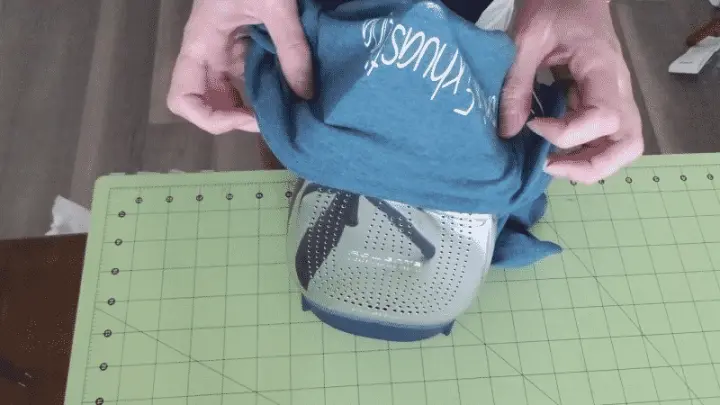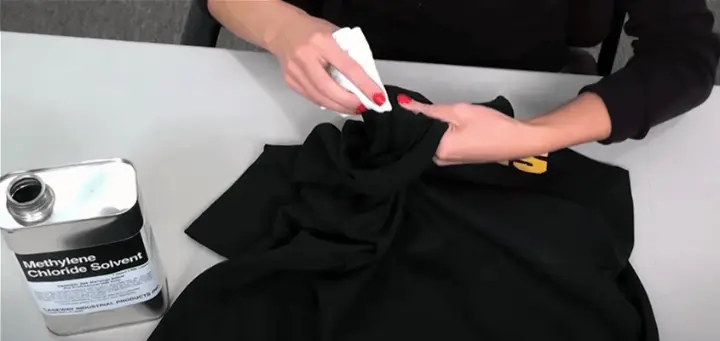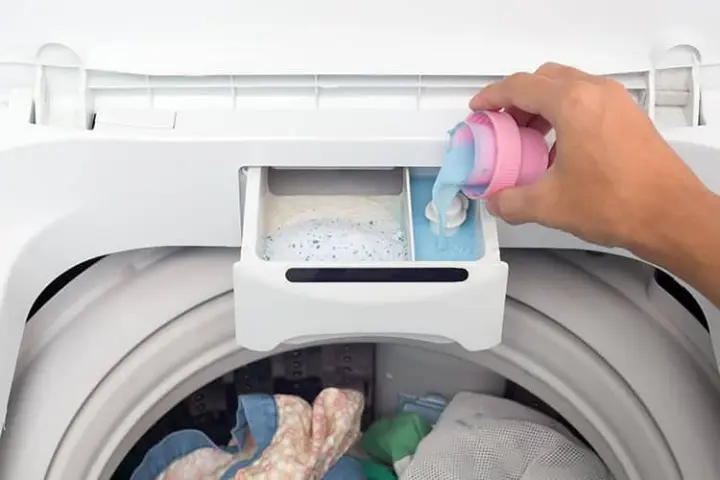No products in the cart.
Blog
How To Remove Heat Transfer Vinyl From Shirt: A Complete Guide
Heat transfer vinyl (HTV) is a popular choice for adding custom designs and graphics to clothing, but what if you want to know how to remove heat transfer vinyl from shirt? Whether you made a mistake, the design has worn out, or you simply want a change, knowing how to remove heat transfer vinyl from shirt is essential.
In this comprehensive guide, we’ll explore various methods for safely and effectively removing HTV, using both household items and commercial products.
Why Should We Need To Know How To Remove Heat Transfer Vinyl From Shirt
Removing heat transfer vinyl (HTV) from a shirt may not always be the first thing that comes to mind when dealing with custom-designed apparel. However, there are several compelling reasons why one might want to consider this process.
Firstly, mistakes happen, and sometimes, the initial of how to remove heat transfer vinyl from shirt may not turn out as intended. Whether it’s a misaligned design, an error in placement, or simply a change of heart regarding the chosen design, being able to remove HTV offers a chance to correct or update the garment.
Secondly, HTV can deteriorate over time, especially after numerous washes and wears. The vibrant colors and sharp lines that once defined your design may fade or crack, making the shirt look worn out. Removing the old HTV allows you to refresh the shirt with a new design or restore it to its original condition.
Furthermore, recycling shirts by removing old HTV can be an environmentally friendly choice, reducing textile waste. Additionally, when it comes to selling or gifting customized apparel, having the ability to remove HTV can be invaluable, as it allows you to repurpose or re-brand shirts for different occasions or customers.
How to Remove Heat Transfer Vinyl From Shirt
Using Commercial Heat Transfer Vinyl Remover
If you’re looking for a quick and efficient way to remove HTV from your shirt, commercial HTV remover products can be a lifesaver. Here’s how to use them:
- Apply the Remover: Follow the manufacturer’s instructions and apply the commercial HTV remover to the vinyl area on your shirt.
- Wait: Allow the remover to sit for the recommended time, usually a few minutes, to break down the adhesive.
- Peel Off the HTV: Gently peel off the HTV with a plastic scraper or your fingernail. Be cautious not to damage the fabric underneath.
- Clean the Residue: If any residue remains, use a cloth or sponge to wipe it away. Wash your shirt as usual.
Using a commercial on how to remove heat transfer vinyl from shirt (HTV) remover is an efficient and reliable method to eliminate HTV from your shirts. These specialized products are designed to break down the adhesive used in HTV, making the removal process relatively straightforward.
To use a commercial HTV remover, you typically start by applying the product to the vinyl area on your shirt as per the manufacturer’s instructions. This often involves allowing the remover to sit for a specified period, usually just a few minutes, to ensure it effectively penetrates the adhesive. Once the remover has had time to work its magic, you can gently peel off the HTV.
Using a plastic scraper or your fingernail, be cautious not to damage the fabric underneath. After successfully removing the HTV, you may still encounter some residue. However, this is easily addressed by using a cloth or sponge to wipe it away.
Commercial HTV removers offer a quick and reliable solution for those looking how to remove heat transfer vinyl from shirt without compromising the fabric or spending excessive time and effort. They are particularly handy when dealing with intricate designs or larger areas of vinyl, as they can save you both time and frustration in the removal process.
Using Rubbing Alcohol

Rubbing alcohol is a readily available household item that can help loosen and how to remove heat transfer vinyl from shirt. Here’s how to do it:
- Apply Alcohol: Dampen a cloth or cotton ball with rubbing alcohol and gently rub it over the HTV.
- Heat the Vinyl: Use an iron set to a low heat setting, and place a cloth or parchment paper over the vinyl. Iron over it for 10-15 seconds to soften the adhesive.
- Peel Off HTV: Carefully peel off the HTV using a plastic scraper or your fingernail.
- Clean Residue: Wipe away any remaining residue with rubbing alcohol and launder your shirt as usual.
Rubbing alcohol is a versatile and effective solution when it comes to how to remove heat transfer vinyl from shirt (HTV) from a shirt. HTV is a popular method for adding personalized designs and graphics to garments, but sometimes, mistakes or design changes may require its removal. Rubbing alcohol, with its solvent properties, can help you tackle this task with relative ease. To begin the process, place the shirt on a flat surface with the HTV facing up.
Next, soak a clean cloth or cotton ball in rubbing alcohol and generously apply it to the area where the HTV has adhered. Let the rubbing alcohol sit for a minute or two, allowing it to penetrate the vinyl and weaken the adhesive.
Afterward, use a flat-edged tool, such as a plastic scraper or a credit card, to gently lift and peel off the HTV. Be patient and work slowly to avoid damaging the fabric. If any residue remains, you can apply more rubbing alcohol and continue scraping until the vinyl is completely removed.
Once you’ve successfully eliminated the HTV, it’s essential to wash the shirt to remove any leftover alcohol residue and ensure it’s ready for a new design or use. In conclusion, rubbing alcohol is a handy and cost-effective solution for safely and efficiently removing heat transfer vinyl from a shirt, saving your favorite garments and giving you the opportunity to start fresh with your custom design ideas.
Using an Iron

This method combines heat from both an iron and a hair dryer to how to remove heat transfer vinyl from shirt HTV effectively:
- Iron Over Parchment Paper: Place a piece of parchment paper over the HTV and iron it for about 15 seconds. The heat will soften the adhesive.
- Peel Off HTV: Gently peel off the HTV with a plastic scraper or your fingernail.
- Clean Residue: Remove any leftover adhesive with rubbing alcohol and wash your shirt as usual.
Using both an iron can be a clever approach when you find yourself needing to know how to remove heat transfer vinyl from shirt (HTV) design from a garment. Begin by laying the shirt flat on a sturdy, heat-resistant surface with the heat transfer vinyl side facing up.
First, take the iron and set it to its highest heat setting, directing the hot air over the HTV. The heat from the hair dryer will soften the vinyl’s adhesive, making it more pliable and easier to work with.
Keep the iron a few inches away from the vinyl to prevent any damage to the fabric. Once the vinyl becomes warm and flexible, switch off the hair dryer and quickly grab your iron.
Now, set the iron to its cotton or linen setting, ensuring that there is no steam. Place a thin cloth or a piece of parchment paper over the heat transfer vinyl to act as a barrier between the iron and the vinyl. Gently press the iron over the cloth or parchment paper, applying consistent pressure for about 10-15 seconds.
This heat from the iron’s pressure will help to further loosen the vinyl from the fabric. Carefully lift the cloth or parchment paper and check if the vinyl is starting to peel away.
If the vinyl is still not completely loosened, repeat the process, using the iron alternately until you achieve the desired result. Be cautious not to overheat the fabric, as excessive heat can damage it.
Once the vinyl has sufficiently lifted, use a pair of tweezers or your fingers to peel it off slowly. If any adhesive residue remains on the fabric, you can use a bit of rubbing alcohol or adhesive remover to clean it up.
Using Acetone (Nail Polish Remover)

Acetone, commonly found in nail polish remover, can also help remove HTV:
- Dampen a Cloth: Moisten a cloth or cotton ball with acetone.
- Rub Gently: Gently rub the cloth over the heat transfer vinyl until it starts to loosen.
- Peel Off HTV: Carefully peel off the heat transfer vinyl using a plastic scraper or your fingernail.
- Clean Residue: Wipe away any remaining residue with a cloth dampened with acetone and wash your shirt as usual.
Acetone, commonly found in nail polish remover, can be a handy solution when you find yourself needing to remove heat transfer vinyl from a shirt. Heat transfer vinyl, often used in custom shirt designs, can sometimes lead to errors or changes in design preferences.
Acetone’s effectiveness in this task lies in its ability to break down the adhesive bond that attaches the vinyl to the fabric. However, it’s essential to proceed with caution. First, test a small, inconspicuous area of the shirt to ensure that the acetone won’t damage the fabric or cause discoloration.
Once you’ve confirmed it’s safe to proceed, apply a small amount of acetone to a clean cloth or cotton ball and gently dab the affected area. Allow the acetone to sit for a few minutes to soften the adhesive. Then, using a plastic scraper or your fingernail, carefully peel off the vinyl while it’s still moistened by the acetone. Be patient and work slowly to avoid damaging the fabric. If needed, repeat the process until all the vinyl is removed.
Once you’ve successfully known how to remove heat transfer vinyl from shirt, wash the shirt to eliminate any residual acetone odor and ensure it’s clean and ready for your next customization project. Acetone can be a valuable tool for salvaging shirts and giving them a fresh start, but it’s essential to exercise care and take your time to achieve the best results without causing harm to the fabric.
Using Goo Gone or Petroleum Jelly
Both Goo Gone and petroleum jelly can be effective for understanding how to remove heat transfer vinyl from shirt removal:
- Apply the Product: Apply Goo Gone or petroleum jelly over the heat transfer vinyl and let it sit for a few minutes.
- Peel Off HTV: Gently peel off the heat transfer vinyl with a plastic scraper or your fingernail.
- Clean Residue: Wipe away any remaining adhesive with a cloth and some rubbing alcohol, then wash your shirt.
When faced with the task of how to remove heat transfer vinyl from shirt, Goo Gone or petroleum jelly can prove to be invaluable allies. Goo Gone, a commercial adhesive remover, and petroleum jelly both possess properties that can effectively break down the adhesive bond that attaches the vinyl to the fabric. To begin, lay the shirt on a flat surface, and if possible, turn it inside out.
Next, apply a generous amount of Goo Gone or petroleum jelly to the affected area, ensuring that the vinyl is thoroughly saturated. Allow the solution to sit for about 10-15 minutes, which will give it ample time to soften the adhesive. During this waiting period, you can gently work the solution into the vinyl using your fingers or a soft cloth, aiding in the breakdown of the adhesive.
After the waiting period, take a plastic scraper or your fingernail and carefully start peeling off the softened vinyl. Be patient and cautious during this process to avoid damaging the fabric. If any stubborn residue remains, reapply the Goo Gone or petroleum jelly, let it sit for a bit longer, and then continue peeling. It may take a few repetitions to completely remove all traces of the vinyl.
Once you’ve successfully known how to remove heat transfer vinyl from shirt, wash the shirt to eliminate any leftover residue and ensure it’s clean and ready for any new customization.
Both Goo Gone and petroleum jelly are effective in tackling this task, but it’s crucial to exercise care and patience to achieve optimal results without causing any harm to the fabric.
These solutions can be your go-to when you need to give a shirt a fresh start or make room for a new design, making the vinyl removal process manageable and efficient.
Using a Dryer

If you don’t have access to an iron, a dryer can also help:
- Heat in the Dryer: Place your shirt with the HTV in the dryer on a medium heat setting for about 5-10 minutes.
- Peel Off HTV: Quickly remove the shirt from the dryer and peel off the softened HTV with a plastic scraper or your fingernail.
- Clean Residue: Wipe away any leftover adhesive with rubbing alcohol and wash your shirt as usual.
Using a dryer to get the method how to remove heat transfer vinyl from shirt is an unconventional yet effective method that can come in handy when you need to salvage a garment without using chemical solvents or manual scraping.
To begin, turn the shirt inside out and lay it flat on a heat-resistant surface. Preheat your clothes dryer to its highest temperature setting, typically around 140-150 degrees Fahrenheit (60-65 degrees Celsius), and make sure there is no lint or debris inside the drum that could potentially stick to the vinyl during the process.
Place a clean, plain piece of fabric or parchment paper over the vinyl design on the shirt. This acts as a protective barrier, preventing the vinyl from sticking to the dryer’s drum.
Then, carefully lay the shirt with the protected vinyl side down inside the dryer. Close the dryer door and let it run for approximately 3-5 minutes. The heat from the dryer will cause the vinyl adhesive to soften and release its grip on the fabric.
After the designated time, carefully remove the shirt from the dryer and lay it flat on a heat-resistant surface. While the vinyl is still warm, use your fingers or a blunt-edged tool to gently peel off the vinyl from the fabric. Take your time and be patient, as the softened vinyl should come off relatively easily without damaging the shirt.
Repeat the process if necessary, but avoid overheating the vinyl or shirt, as excessive heat may cause fabric damage or shrinkage. Once you’ve successfully understood how to remove heat transfer vinyl from shirt, wash the shirt to eliminate any remaining residue and ensure it’s clean and ready for any new customization or use.
While using a dryer for how to remove heat transfer vinyl from shirt is a less conventional method, it can be an effective and chemical-free approach to salvage shirts and other garments. Just be cautious not to overheat the vinyl or fabric, and exercise patience during the peeling process to achieve the best results.
Conclusion
In conclusion, the use of a dryer how to remove heat transfer vinyl from shirt can be a practical and chemical-free method to salvage garments. This unconventional approach involves preheating the dryer, using the heat to soften the adhesive, and making the vinyl easier to peel off without the need for chemical solvents or manual scraping. As with any vinyl removal method, exercising caution, patience, and care is essential to ensure the best results and avoid any potential fabric damage.


